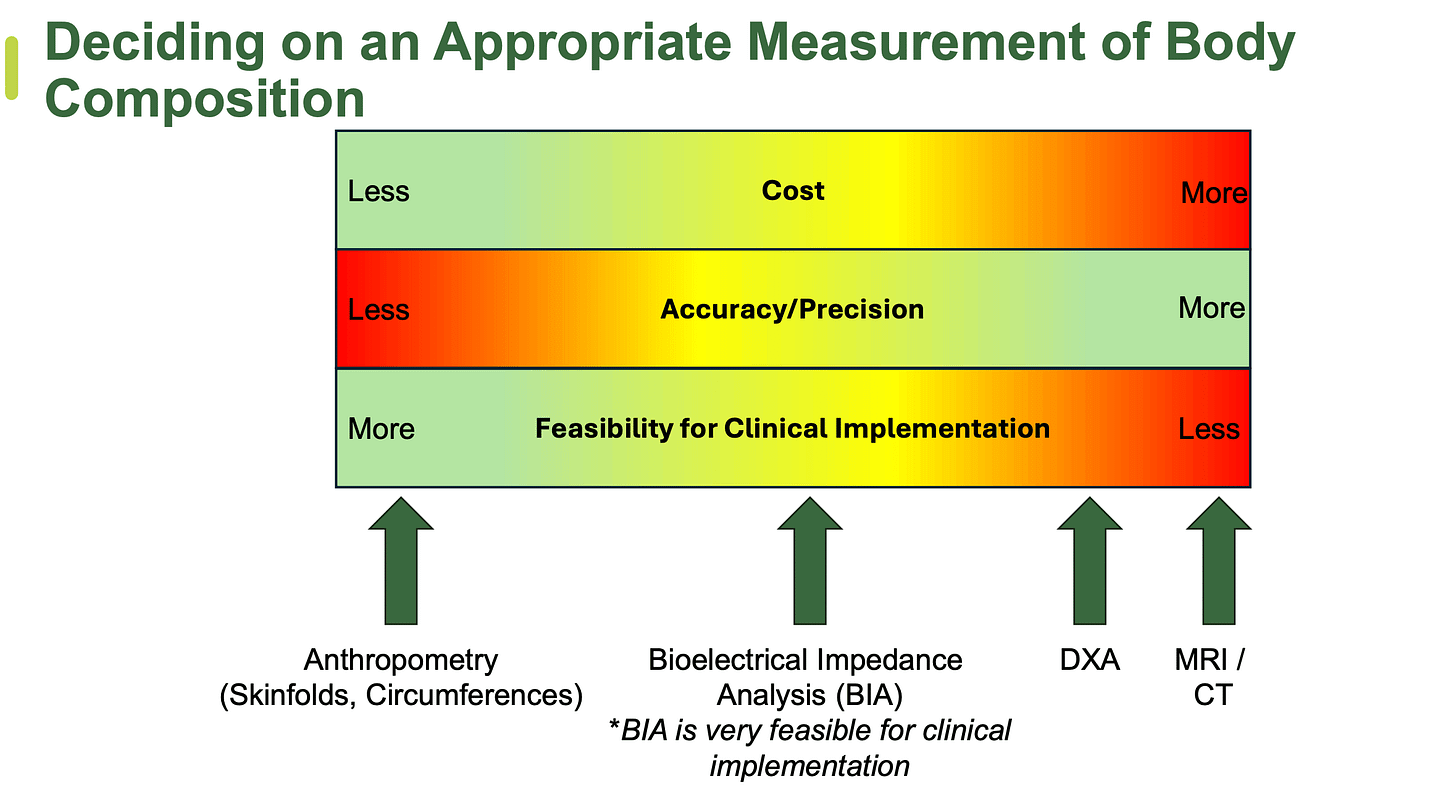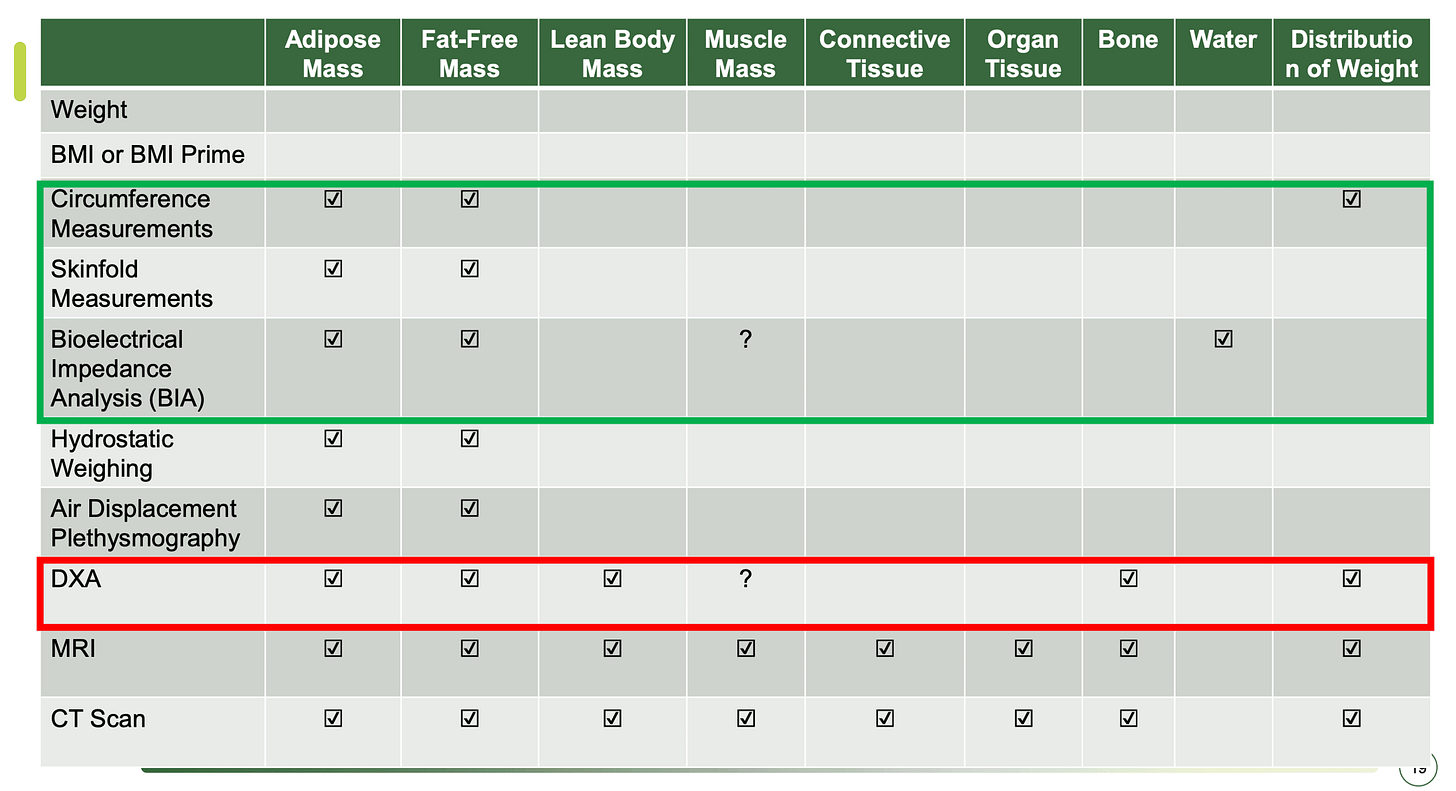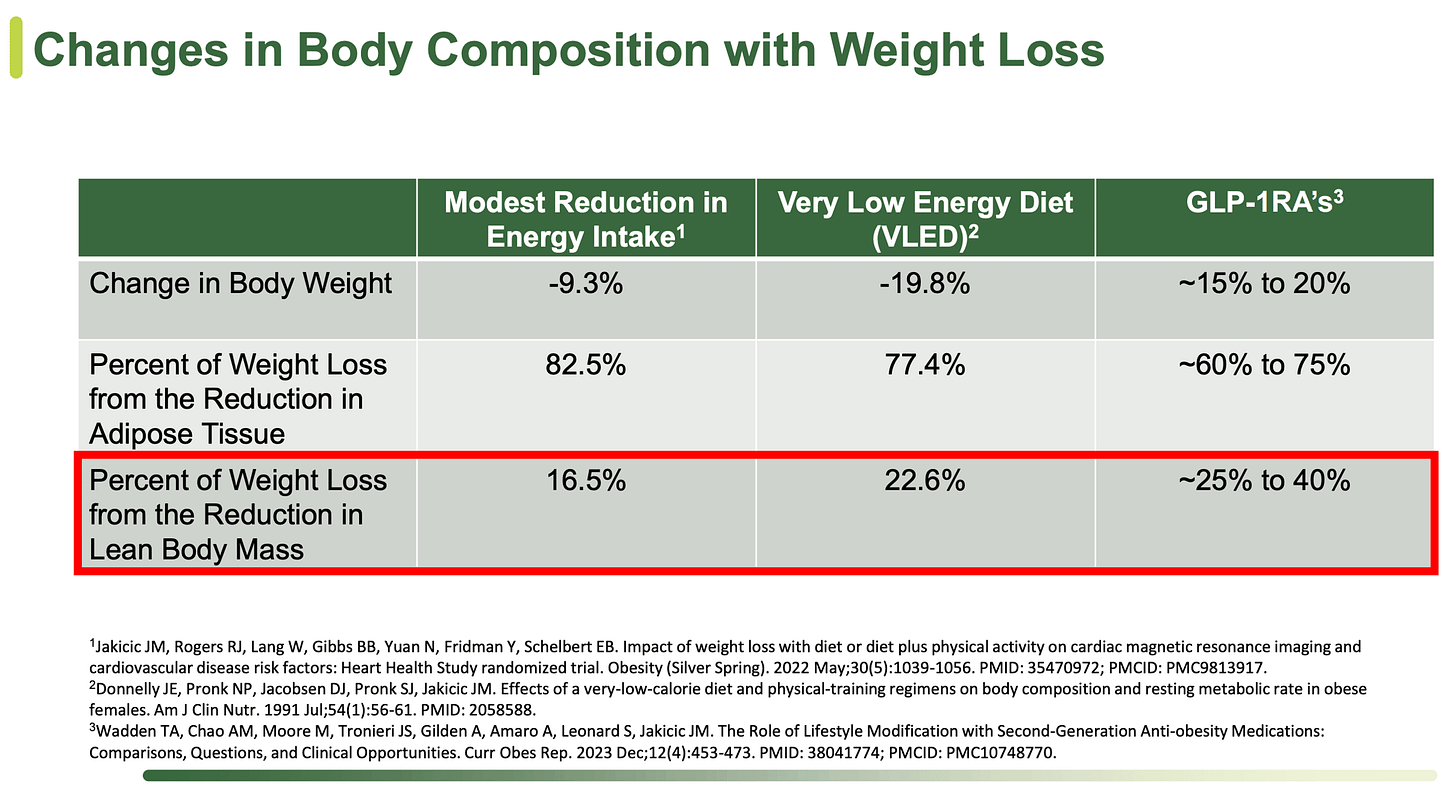GLP-1s and Body Composition: Key Takeaways from the Academy’s Latest Webinar
If you've been keeping up with discussions about GLP-1 medications, you've probably noticed increasing concern around the potential loss of muscle mass with their use. It's a topic that's sparked plenty of debate, so I was keen to join a recent webinar by the Academy of Nutrition and Dietetics, featuring Dr John Jakicic from the University of Kansas, to learn more. Dr Jakicic offered some valuable insights into body composition assessment and management for patients on GLP-1s. I've distilled some of the key points below:
Choosing the Right Measurement
Measuring body composition isn't a one size fits all approach. It's essential to consider three main factors when deciding which method suits your practice best:
Cost: Balancing affordable options versus more precise, higher-cost methods.
Accuracy and Precision: Ensuring reliable and repeatable results.
Feasibility for Clinical Implementation: Choosing methods that seamlessly integrate into your workflow.
In everyday clinical practice, some of the most practical methods include:
Circumference measurements: Quick, easy, and inexpensive.
Skinfold assessments: Reliable when performed consistently, though they require practice.
Bioelectrical Impedance Analysis (BIA): Improved accuracy in recent years, makes it a viable clinical option.
DEXA (Dual-energy X-ray absorptiometry) remains the gold standard for its precision but can be trickier to use and recommend due to cost/availability.
Understanding Lean Mass Changes with GLP-1s
One of the key topics discussed was the nature of lean mass loss on GLP-1 medications. Weight loss with these medications often involves a higher proportion of lean mass compared to diets alone, such as modest calorie restriction or very low-energy diets (VLED). However, an important nuance highlighted was that lean mass loss doesn't automatically equate to muscle loss. You can indeed experience a reduction in lean tissue but still see improvements in muscle strength.
The primary concern arises if lean tissue reduction is accompanied by a decrease in muscle strength, which could negatively impact health and function. This combination is what truly warrants close monitoring.
When to Measure and How to Use the Data
Before undertaking body composition measurements, clearly define your clinical goal. Ask yourself:
Why am I measuring body composition?
How will the results influence clinical decisions or patient recommendations?
Remember, a change greater than 4% in body composition is considered significant, as this surpasses the typical error margin inherent in measurement techniques.
Rethinking Assessment: What Dietitians Can Do Next
There's currently a gap in high quality research assessing muscle changes specifically related to GLP-1s, including how exercise might influence these outcomes. This might present an opportunity for dietitians to contribute through practice. Simple strength assessments, like hand grip tests or validated lower body strength measures, can provide meaningful, functional data alongside body composition measurements. Some may wonder whether this type of assessment falls outside of scope. But with the right upskilling, I believe it's well within reach and well worth incorporating into routine care.
Personally, I believe DEXA remains the ideal method for measuring body composition if it's accessible and affordable, particularly as costs decrease and standalone scanning options become more widespread. If DEXA isn't feasible, BIA is a strong alternative given its practicality and improving accuracy. Incorporating basic strength assessments, along with regular baseline and follow up testing, should become standard practice when managing patients on GLP-1 medications.
Reference
Academy of Nutrition and Dietetics. (2025). Considerations for Body Composition, Physical Activity and Nutrition with Use of Obesity Medications [Accessed 25 May 2025].
Thanks for reading!
Leif
Got feedback? Email leif@glp1dietitianhub.com, I'd love to hear from you.
Note: This newsletter is for educational purposes only and should not be considered medical advice. Always consult a qualified healthcare professional for personalised guidance.
Subscribe for free to receive new posts and support my work





